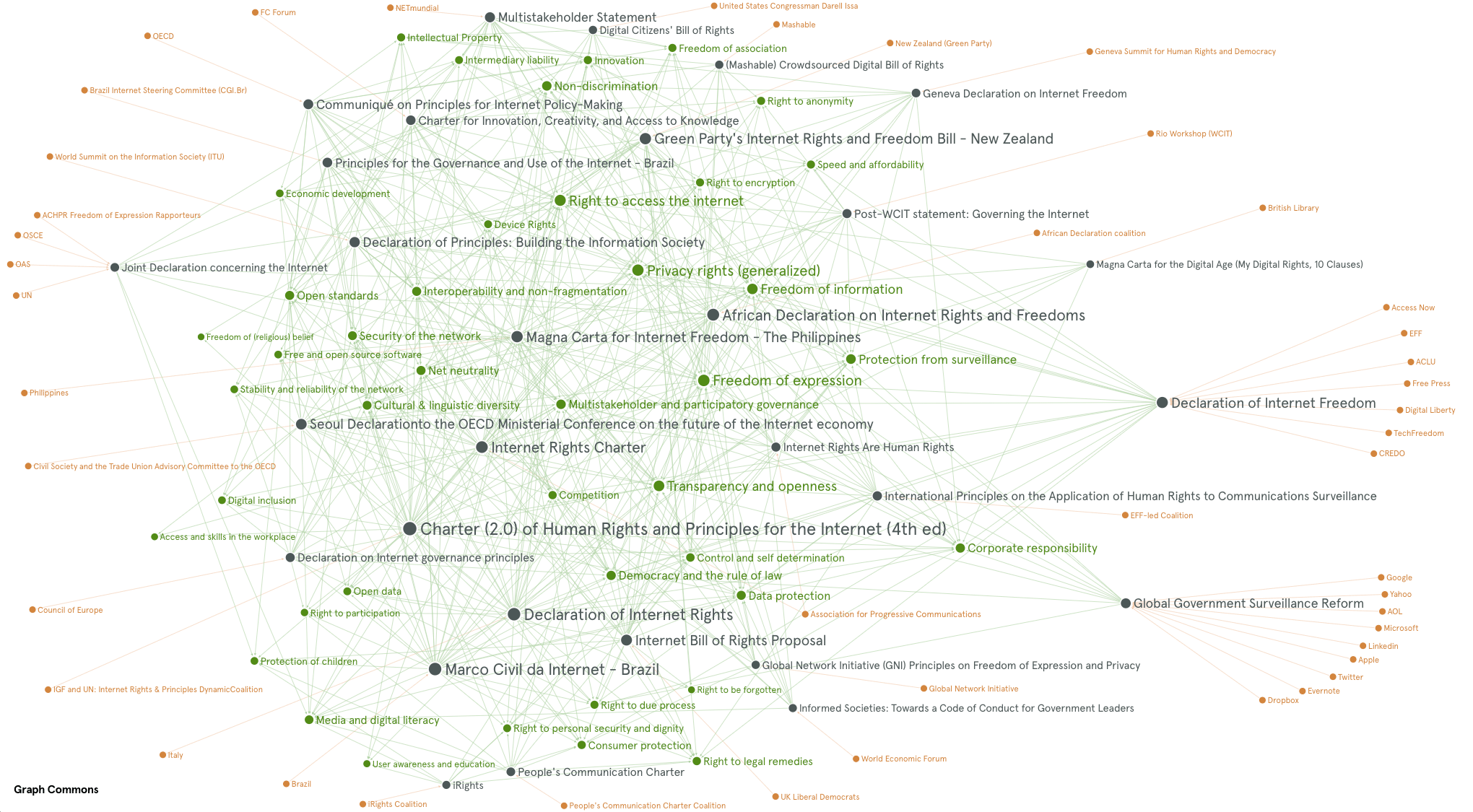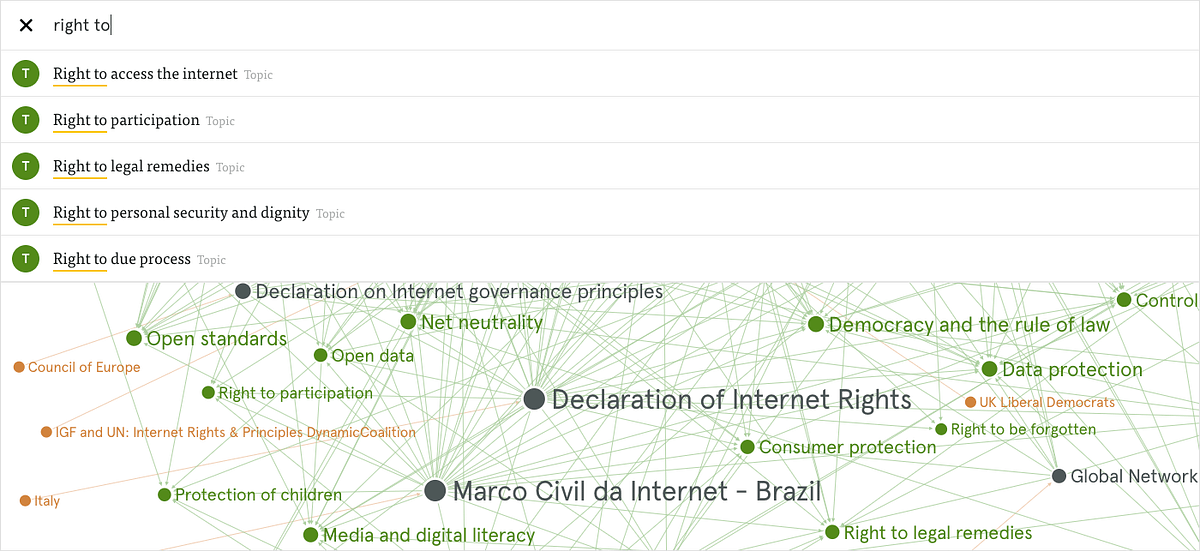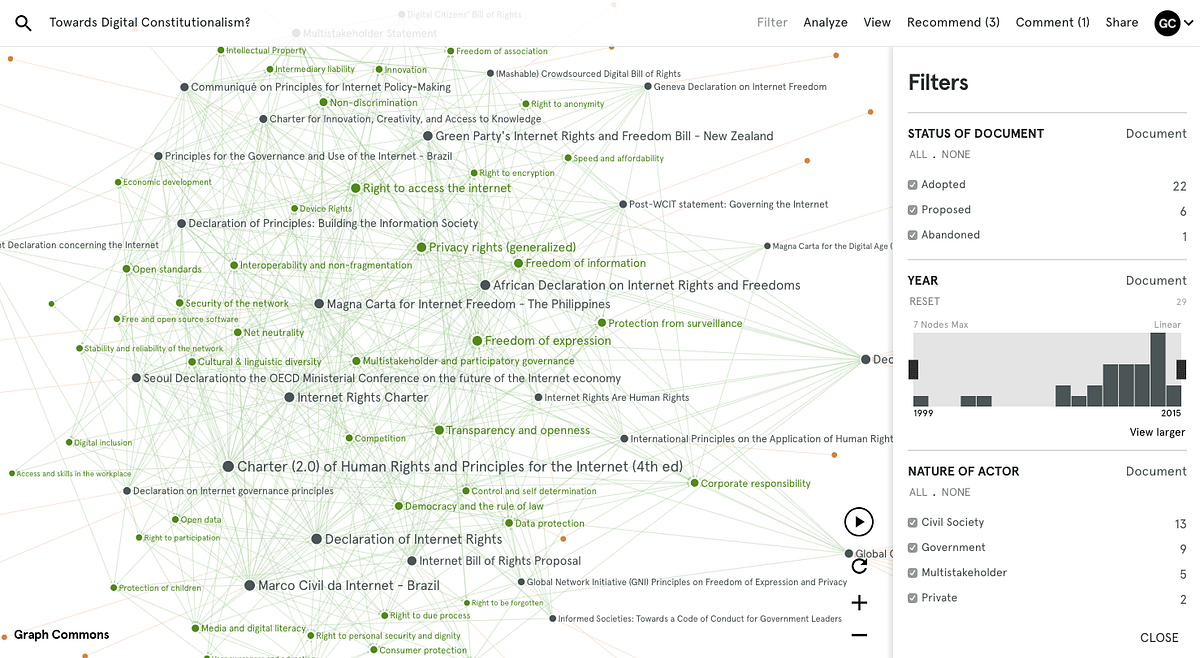Mapping “Internet bill of rights”
Mapping a research paper on policies for internet governance

Interactive map “Towards Digital Constitutionalism?”
With the revelations of mass government surveillance, the intensity of internet governance debates has heightened in the past years. At the core of such debates is the future of fundamental rights, such as freedom of expression, privacy, access to knowledge, and access to the affordable internet, but also how to decision-making process can become more transparent and democratic.
A recent research by Lex Gill, Dennis Redeker and Urs Gasser, “Towards Digital Constitutionalism? Mapping Attempts to Craft and Internet Bill of Rights”, conducts an analysis of 30 initiatives, from advocacy statements to official positions of intergovernmental organizations to proposed legislation, spanning from 1999 to 2015. They each seek to advance a relatively comprehensive set of rights, principles, and governance norms for the Internet. Here is an excerpt from the paper:
The idea of an “Internet Bill of Rights” is by no means a new one: in fact, serious efforts to draft such a document can be traced at least as far back as the mid-1990s. Though the form, function, and scope of such initiatives has evolved, the concept has had remarkable staying power, and now — two full decades later — principles which were once radically aspirational have begun to crystallize into law.
We turned the dataset provided in the article into an interactive network map on Graph Commons.

Interactive map “Towards Digital Constitutionalism?”
The graph Towards Digital Constitutionalism? contains two types relations between three node types:
Actor -ACTS IN-> Document
Document -ADDRESSES-> Topic
There are many ways to read this landscape of internet policies. It was surprising to discover how central the “African Declaration on Internet Rights and Freedoms” on the map, while quite obvious to see “Right to be forgotten” topic to be peripheral, which is only supported by few European political parties.
We suggest you explore the network map yourself as an accompany to the paper. Simply, you can start reading the network map with the following questions:
Which documents are similar to each other based on shared topics? Hint: The nodes that are close by have more shared connections, thus similar.
Which topics are at the center, which ones are on the periphery? What do their positions on the graph tell us?
What would those separately clustered topics mean?
How do certain organizations aggregate together to support one document?
Are there interesting paths between organizations supporting similar topics via the documents?
We suggest you try the graph interface to explore these questions.

Click on the search and type first few letter of your interest; see the suggested list of topics, documents, or actors; select one and it will be located on the graph with immediate relations.

You can filter the graph by checking and unchecking options as well setting ranges of dates or number of connections. Filter proposed documents and topics just for the year 2015. Also, see the documents proposed only by the governments from 2013 to 2015. That would reveal the shared interests of various governments on the internet policy.
The source code to used to generate this graph can be found here.
We hope that you will spend some time browsing this graph. Feel free to share anything you create or find.
If you want to try Graph Commons, sign up for free and start creating and publishing your own graphs.
We welcome feedback on your experience. You can send all problems, suggestions, questions and comments to contact@graphcommons.com, we’d love to hear from you.
Follow @graphcommons on Twitter for a daily dose of network arts and sciences, read our publication on Medium for guides and in depth articles,
join our Slack chat channel for discussions.
This post was co-authored with ahmet kizilay and originally published on the Graph Commons blog, January 26, 2016.


